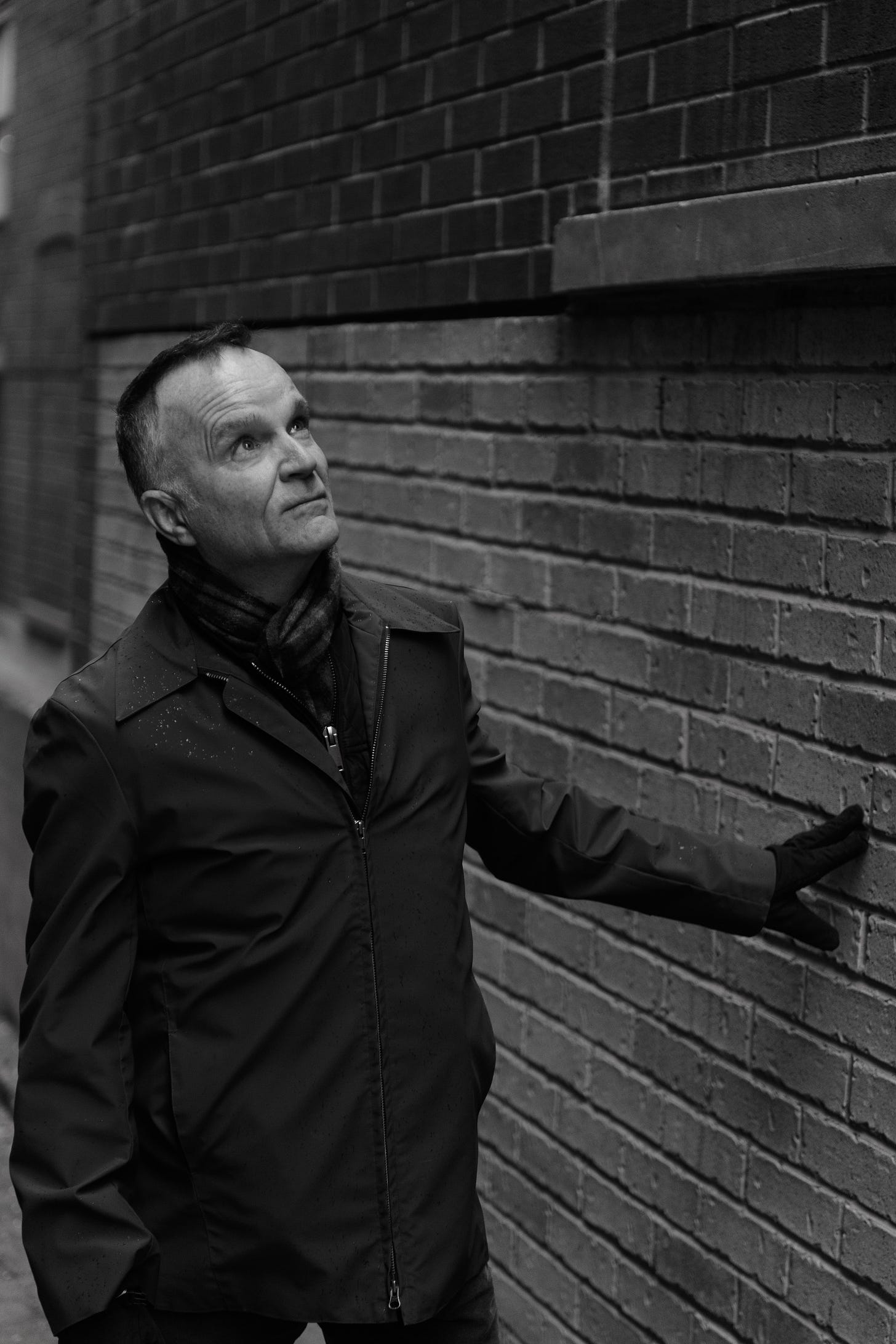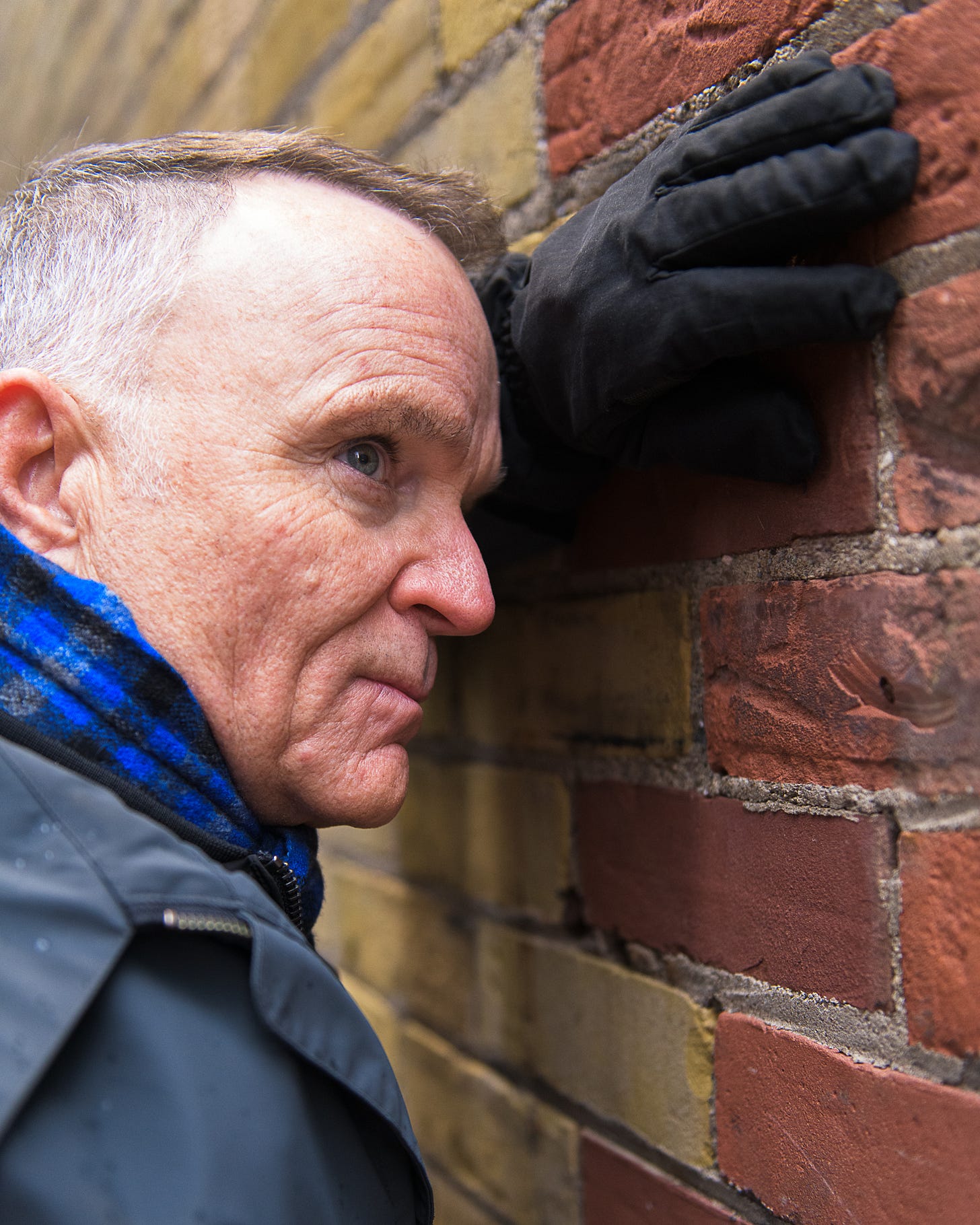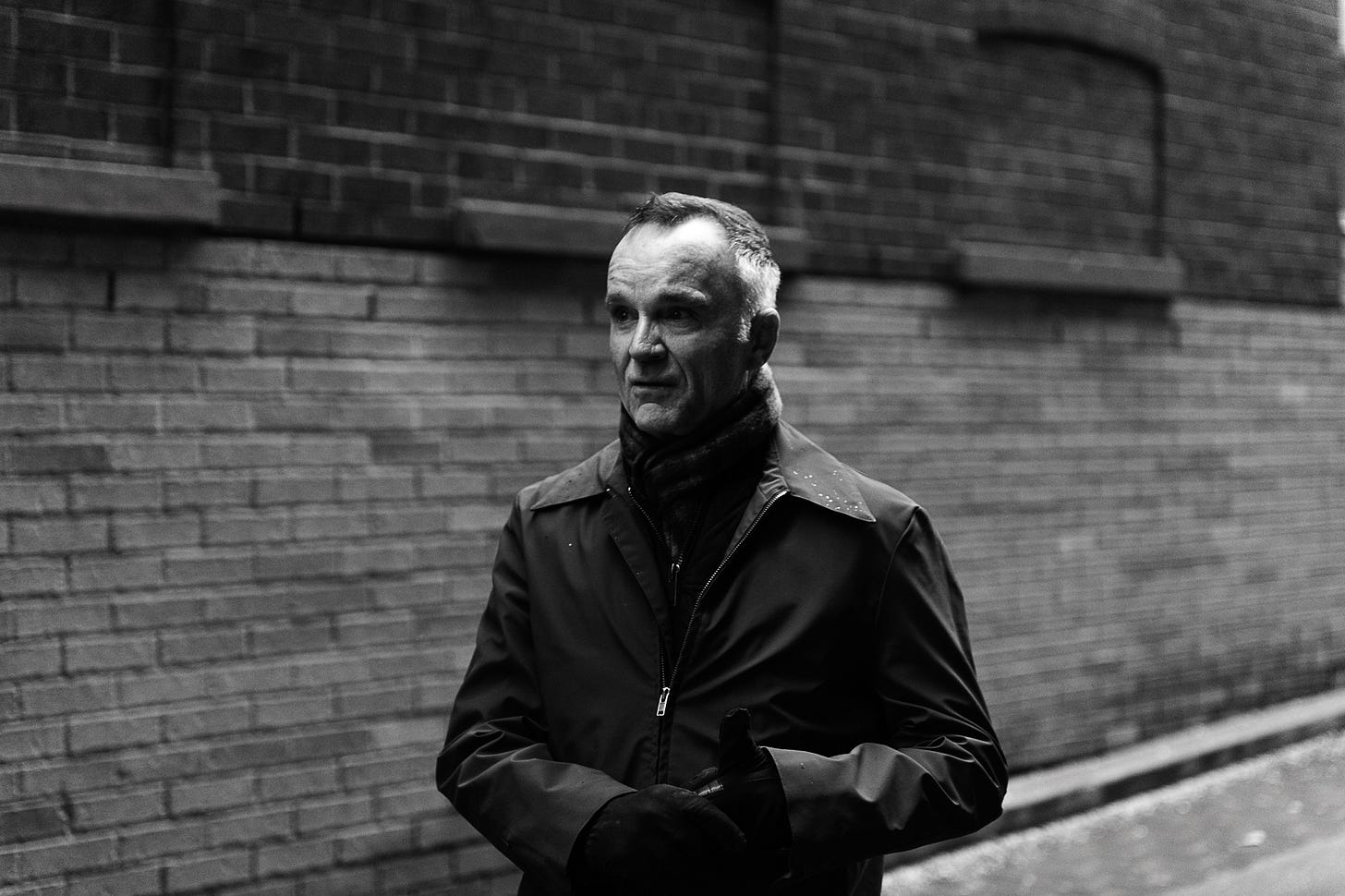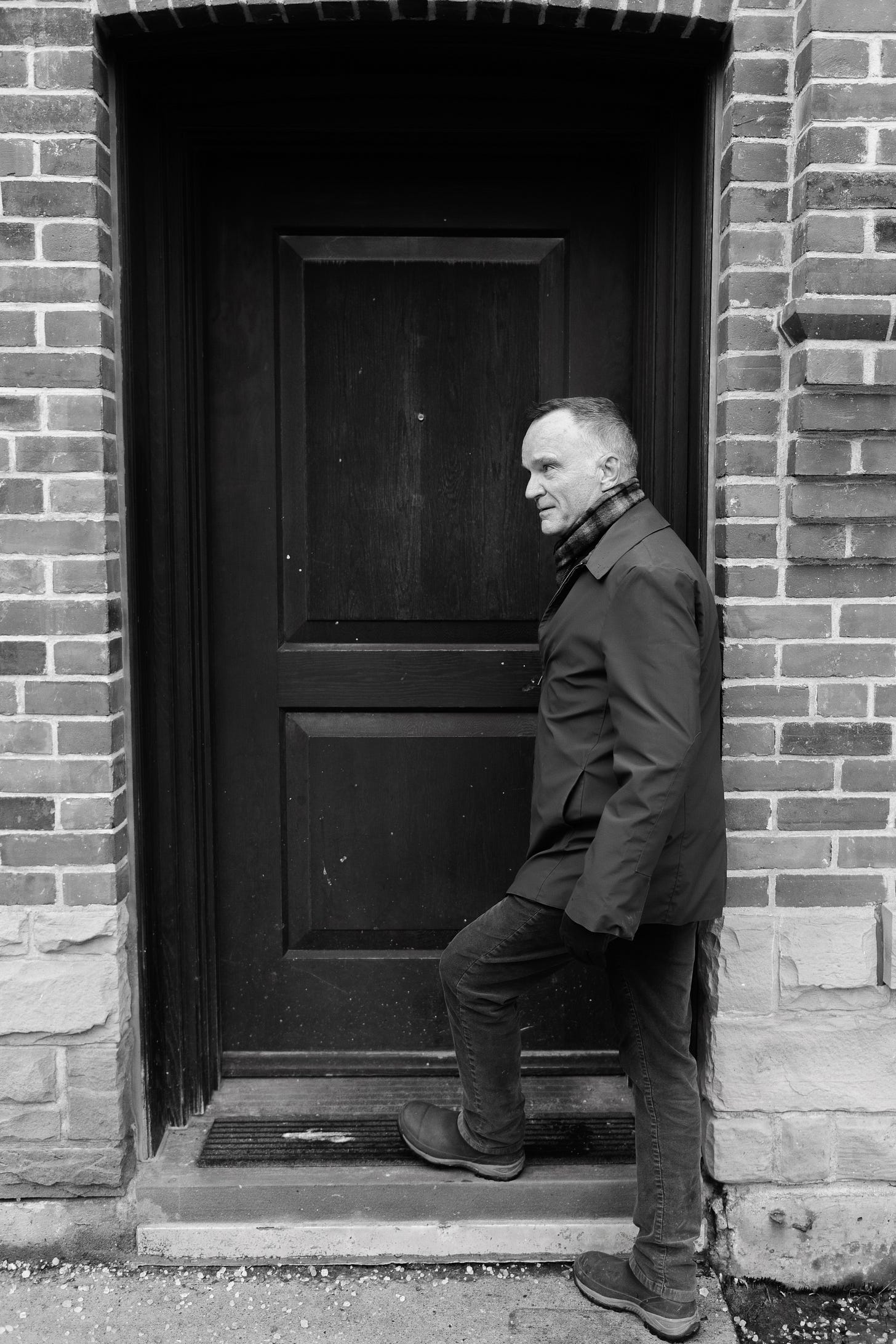Jonathan Wilson is living history in "A Public Display of Affection"
Actor, Playwright, and hesitant Queer Elder Jonathan Wilson, takes us on a trip through The Village of his youth which inspired his upcoming show "A Public Display of Affection".
Jonathan Wilson’s St. Nicholas Street; a small side-street between Yonge and Bay St is his original picture of The Village.
“There was four or five bars. There was a hair salon, cafés, loft apartments, crazy hairdressers. It what I think of when I think of my queer village.”
St. Nicholas today, is home to a trendy wine bar, and a lot of construction. But with Jonathan playing a quasi-tour guide, it is easy to imagine a more vibrant street. Tucked away from the main drag of Yonge Street – home of the St Charles Tavern, a site where every halloween, annual, media-encouraged displays of homophobic and transphobic harassment – St. Nicholas has an element of cover.
“You always felt under threat. As I say, in the play, we were always traveling to get somewhere. There wasn't a lot of street life, because that was not safe. So it was always getting in that door, getting into the club, getting somewhere safe.”
Old brick, overlaid with new brick. Impressions of windows and doors that once were, or at least made to look that way. Rainbow flags on every bank and business. An effort is made by the city to remind you that you are in a historic part of town, but it is the queer elders that hold the key to what the original Village was truly like.
During our photoshoot on St. Nicholas, Jonathan would stop to point in different directions, recounting people and places of a time gone by. From his first protest in response to the Bathhouse Raids of 1981, to the family he made amongst hustlers on Bay Street’s “Boy’s Track”.
“I'm doing a one person show. So by nature, I'm over sharing. Even I go, ‘okay, Did I go too far?’ But it is part of queer history that people don't really acknowledge. They think of parades, speedos and corporate sponsorship and TD Bank.”
A Public Display of Affection by Jonathan Wilson is a Studio 180 production in association with Crow’s Theatre, opens March 25th. This deeply personal solo show arrives three decades after his breakout solo show My Own Private Oshawa, which traced his past as a closeted gay kid dropping out of high school to move to Toronto. The new show casts its perspective into the past, present and future of The Village with Wilson, a hesitant, but excited, queer elder as their guide.
Jonathan Wilson sat down with Simmering at Glad Day Bookshop to talk about the upcoming show.
Was it the dream to do theatre when you moved here?
It was kind of a surprise, because I wasn't part of theater in high school – I dropped out in grade nine, which is not much of a high school life, but sort of on the fringes of it. So it never seemed like something that the door was open.
When I came here to Toronto, I worked up at Church and Bloor when I was 16, in the mail room, and they had a community theater group. This great cabal of lesbians took me under their wing, and they invited me to be in the theater group. So I just did play after play, community theater in Toronto. I kind of had always been curious about it, but it didn't seem possible. Then I just dove right in and just loved it, and then wanted to study and do it for sure.
How much is this show a companion piece to My Own Private Oshawa?
I was sort of resisting that for a while, because that's 30 years ago. This show is more like, as an older queer elder, because that's what I've been asked to speak as — a queer elder, and unpacking that. I don't feel like an academic, so it's been a great process to just go, “I'm just gonna tell what I know.” I don't have to pretend, which is something we always do — you know, imposter syndrome.
So it’s 30 years later, and what I'm willing to share versus what I was then, or how I wanted to package queerness.
I talked about it working with a lot of queer young artists now, there was a tendency, and there still is, to kind of say, “Oh, I'm a good one. Come this way. It's safe”, and then realizing, “oh, no, no, you have to come to me a little bit come into my world.” I don't have to pretend to be a good gay. A normal, quote, unquote gay for you to feel safe.
I sense a bit of hesitation or a reticence around the term “queer elder”.
Yeah, well, it's like, “wow, I'm still here”.
I remember telling them “I don't think I'm old enough.” They were like, no, no, you are.”
My generation, I know it's a bit of a cliche, but a lot of our elders died. We're not here. So that idea of like an integrated, long life is still a little dissonant, and you want to be that person that shows a younger person the way, safely and respectfully
It's sort of uncharted in my life, in a way. So that's the excitement and also the hesitation.
You’ve definitely seen changes to The Village, so what do you feel is the connection between being a queer elder with seeing social, cultural and architectural changes to the neighbourhood?
I've of course been around long enough to remember when this wasn't here. I mean, there was no Village. Most of the bars or clubs were at Yonge and Wellesley up to Yonge and Bloor, and for a while it seemed like Parliament would be a queer ghetto. We don’t use that term anymore, but back then, it was the ghetto. We just congregated, and it seemed to be that Church Street took over.
It's funny, we should do this today. I don't know if you heard yesterday, some corporate sponsors have pulled out of pride. I'm old enough to remember that I was suspicious of corporate sponsorship. So to me, it's like, oh yeah, kind of knew that would happen, which is also manifest in the development of this neighborhood of rainbow washing, pink washing.
“Welcome to the neighborhood. We embrace you. We embrace your money, and now, goodbye.”
The first thing I noticed getting off at Wellesley Station was that every bank has the pride flag on every door and window.
I try not to be a cynical person, but I think as a queer person, you love allies, but you're always suspicious of allies. As my friends always say, “Be suspicious of allies and always check the exits.” You want to not say no to allies, but there is that secondary thought of “What are you getting out of this? Are you in this for the long haul?”
In this neighborhood, you can see it, definitely. It's switching up and the housing is becoming unaffordable. Do you keep sort of a Disneyfication of queer village? It becomes like an illusion, as opposed to the people. Where did all the people go? But that's true with any gentrification – it's queer people, artists, and then people go “Oh, I want to live there.”
A Public Display of Affection appeared virtually in 2022…
Studio 180 who's helped me develop it from the start, during lockdown days, they got a grant specific for online performance or capture. It was a great experience to get it up, but it was so strange, because I am a theater performer, and this was a theater piece. It was me alone in a room, with the crew, but just sort of sending it off into space. Some people have said, “Oh, you get to do it again,” but to me, I haven't done it yet, because I can't wait for an audience to be there; to actually hear them hearing it. I'm very much looking forward to that.
Have you changed anything script-wise to adapt for a live audience?
That’s the cool thing about theater, right? You’re going to have previews, which is like the test piece – it’s “theory, theory, theory,” and here's an audience, and the things you thought were hilarious aren't. The audience will find something else funny. They'll connect. So I have been rewriting and have been working.
The thing for me now is to just try and leave it because that extra piece of the puzzle is the audience. Because I've been working on my own for a while and with Mark [show Director, Mark McGrinder] and Studio 180 you can tend to get just bored of stuff on your own, and you lose track of what actually you want it to say. So my challenge right now is to bring that audience in and let them tell me what works.
The show is definitely in development, in as much as like any theater piece, it will be different every night.
The focus of the play is talking to queer youth. Part of Studio 180’s great thing is that I've been able to go into high schools with these students – I have a fear of teenagers and they had to work me through that – and they were so amazing, and they ask the smartest questions. There are things in the show that I set up and then you can go there yourself, and it was so nice to hear from them “I got it.” or “I didn’t know this happened”, and it was incredible. Those were the few times that I’ve really got to work with an audience.
That’s the overriding theme – sharing knowledge; an oral history, a living history. Not the approved, stamped on pamphlets pride.
Having a show that can lean towards an oral history style, what is your approach to keeping that fresh and present for an audience?
I’m really not good with audience participation – they’re listening, that’s participation enough. But But it is lovely when I mention long lost places in the village, and just to hear one person [gasp with recognition] when I mention Pimblett’s or The Manatee – that's been really cool.
Because who I am keeps changing, as we all do, my perspective on the past changes too. Which is inspiring and great of course, but I have to keep track of that in my own mind because there are some things I wrote three or four years ago in a draft that I don’t believe anymore.
Even talking about what is happening with Pride and everything, it’s happening in real time. My perspective on the rise of certain politics, which is a very core feeling, remembering that feeling – it’s kind of gross to feel it all over again.
Given the social political climate, how much of this movie have you seen before? And what's different this time?
Well, I guess what’s different this time is queer life has been fully co-opted corporately, which before, there was always that tension between the two, and we actively – I think to our own benefit, had to have allyship. So this time, it feels a little different because we almost signed our – again, I’m sounding cynical, but it’s like we signed it over. You have our rainbows, you have our pride, and now you’re going to shut it down because you are in charge of it.
I was alive when Reagan was alive. That was a very charming terrible person. Today’s politicians don’t even feel the need to couch anything. That’s the point. The cruelty is the point, and that is alarming.
So when cruelty is the point, what is the response?
I don't know. It's changing day by day. I mean, the theory is, let that expose itself and that, hopefully there's enough guard rails in our democracies that we can correct. It's being pushed very hard right now. You can hear the tires screeching the sideboards. But I do have an overriding belief that social justice will always win.. It's never over.
Though, when I started writing the play, I was like, “Oh, this is sort of, yeah, we won queer rights. Yay. The end of the road, congratulations.” But now it's women's rights, trans rights, queer rights – they’re always up for grabs by the larger, dominant culture, and they're gonna pull out every stop to demonize us.
It's not a happy message. But we'll be fine. Just don't turn on each other.
What is the best soup you’ve had?
My husband makes an amazing Acadian chowder. And so every time when he does it, he sort of gets into his own making it. And I come home and smell it — mmmm. So that's definitely my favorite soup.
Historically, what was the best soup in the Village?
Historically, there used to be a place called Windows on Church, which was the fanciest place you could get to. So when I was a kid we would go up against the window and try and imagine what people were eating inside. So whenever I think of fine dining in this area, that's what I think of. It's long gone.
A Public Display of Affection by Jonathan Wilson.
March 25 - April 20
Crow’s Studio Theatre
https://www.crowstheatre.com/whats-on/view-all/a-public-display-of-affection
Interview edited for length and clarity.
Simmering takes a lot of time and energy. If you’ve been enjoying this independent arts and culture coverage, please consider subscribing.
Or if you’d like to consider a one time donation, you may do so here.








